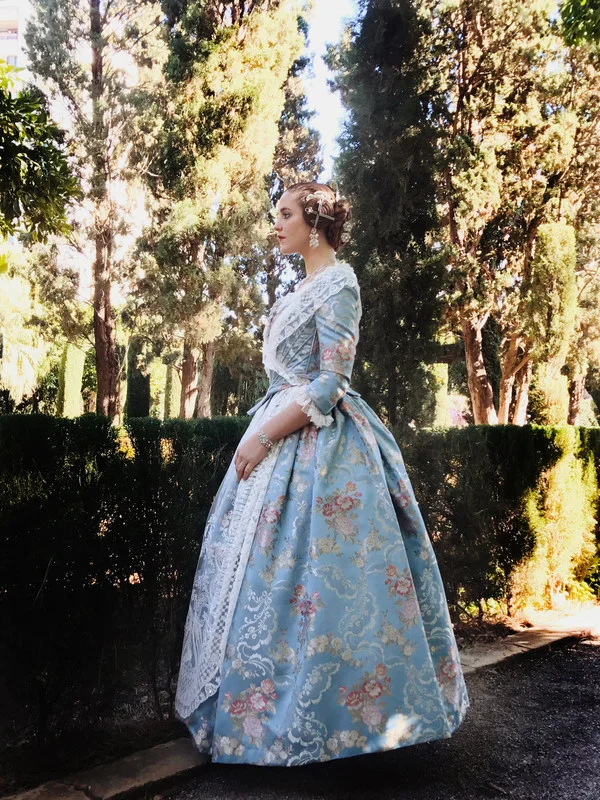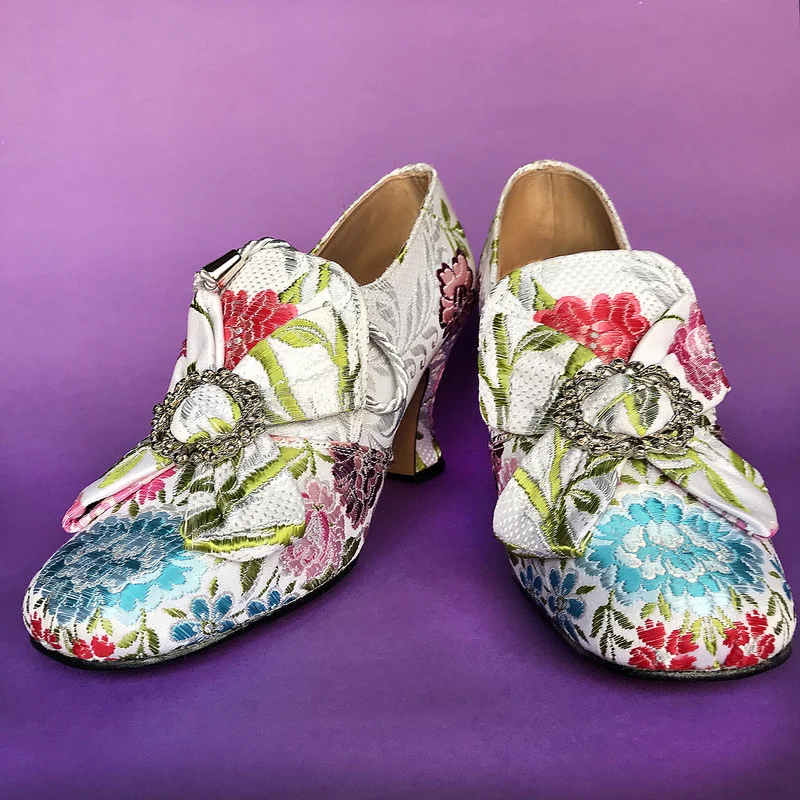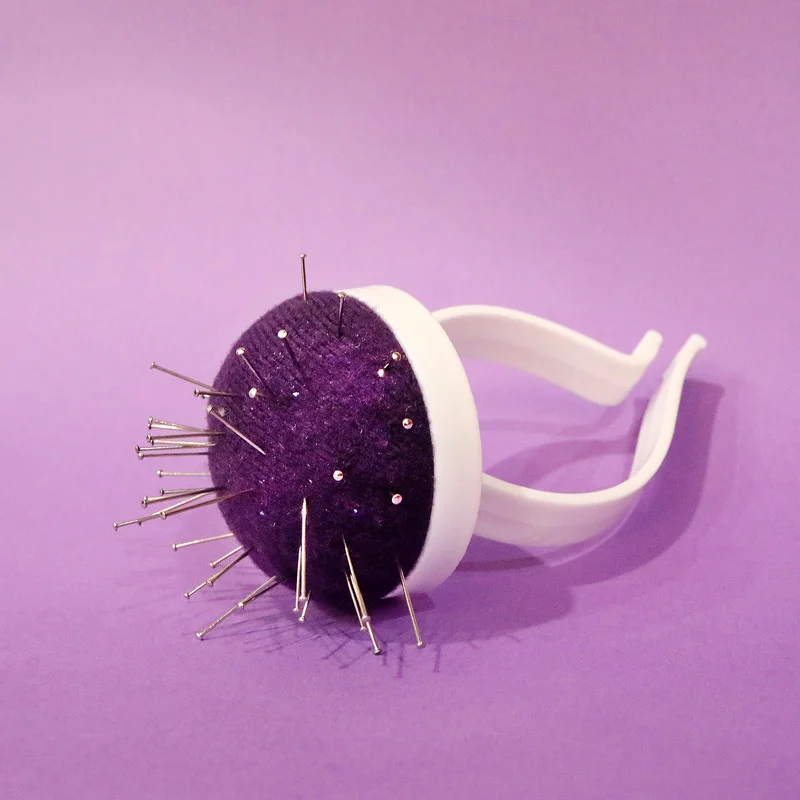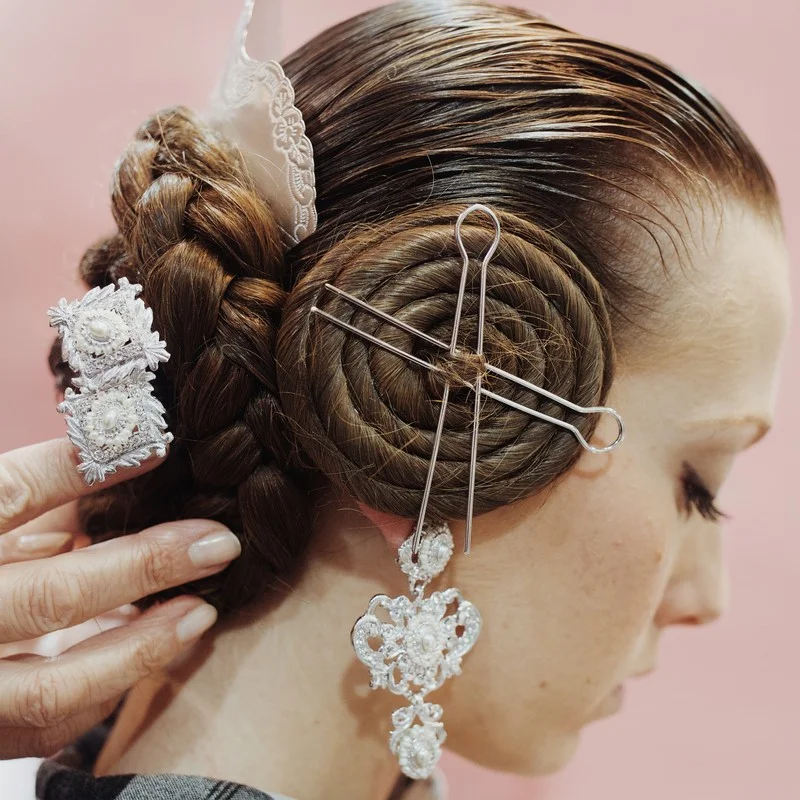BEING a Fallera is more than just putting on a posh frock and it’s certainly not to be referred to as ‘fancy dress’. This is a serious business.
The first Fallera dresses were inspired by the clothes worn by peasant women working in the rice fields around Valencia, but nowadays this traditional dress has come a long way from its peasant origins and is worn by anyone who wants to take part in the city’s biggest party.


The cost of the dress alone is enough to make one weep, with the average outfit costing well in excess of €1,000. Then there are all the extras; the hair, the jewels, the underwear, not to mention the annual fee paid to be a member of one of Valencia’s 350 or so Fallas, which is inextricably linked to being a Fallera. These are the groups or Comisiones which, among many other activities throughout the year, organize the fantastic monuments displayed around the city which are burnt on 19 March.
Each Falla has a Fallera Mayor, if you like the ‘Miss’ of their group, who represents them at certain events. This is quite an honour but also a huge expense for the family, and can cost tens of thousands of Euros. There is also a Fallera Mayor Infantil for younger girls. The Fallera Mayor can then put herself forward to be Fallera mayor of Valencia, again another huge expense for her family but for a true Fallera, worth every Euro. The expenses include at least four or five new dresses, most probably of pure silk, the cost of entertaining, photographers, flowers, the list goes on….Horror stories are even heard of families having to sell homes and businesses at the end of their daughters’ year as Fallera Mayor.


It’s an expensive hobby and last year some €6.97 million were spent by the Comisiones on the nearly 800 monuments which went up in flames on 19 March.
So, if it’s so expensive, why do the Valencians do it? Obviously there is a financial benefit, as around a million tourists descend on the city every year in the middle of March, and indeed in 2016 UNESCO recognized the fiesta, putting it on their list of Intangible Cultural Heritage of Humanity, but for those involved in the Comisiones it’s something much deeper. Many Valencians have a long family traditions of being Falleras and Falleros and the fiestas are filled with meaning and emotion for them.
The most poignant and solemn moment for most is the ofrenda when they dress in their smartest traje, parade through the city with a brass band, ending at the cathedral where they give flowers to the patron saint of Valencia, La Virgen de los Desamparados. It’s an emotional moment for most and many a tear is wiped away as they pass through Plaza de la Virgen.
So what makes a Fallera?
Let’s start with the dress, although strictly speaking it’s actually comprised of two parts: a falda (skirt) and corpiño (bodice). Sometimes the two parts are made of the same fabric, sometimes different, but you’ll be lucky to buy the two for less than €1,000 and for pure silk expect to pay upwards of €6,000. Then you have to add manteleta(the lace on the shoulders) and the delantal (the apron) and you can kiss goodbye to another few hundred Euros. Each fallera ‘dress’ is not only tailor-made, but because of the style of the dress has to be almost entirely sewn by hand, which is the reason for the high prices.
The shoes are also handmade and of the same fabric as the dress. The rule here is that if the bodice is a different fabric from the skirt the shoes should match the bodice. (Just little things, but fundamentally important in the Fallera world.)

Given the cost of outfitting one’s daughters in fallera dresses you might think that once bought the dress would serve for several years, but you’d be wrong. Believe it or not the fashions of this ‘traditional’ dress change; around the turn of the Millenium the fashion was for mid-calf length hems, then a few years later the skirts had to almost touch the ground and this year, 2018, they’re 12cm off the ground again. Likewise the manteleta is also subject to change, sometimes reaching right across the shoulders, sometimes being much smaller, while the delantal, the lace apron, once finished above knee height and now reaches almost to the hem of the skirt.
The sleeve styles and bodices have also changed and some Valencians complain that the current styles are more akin to something that would have been worn at the court of Marie Antoinette, rather than sported by a Valencian peasant woman working in the rice fields.
A cynic might say that the fabric manufacturers and Fallera shops instigate these fashions to keep themselves in business, but whatever the cost, a fully dressed and groomed fallera is a sight to behold.

This brings us to the hair, not a quick affair either. The fallera’s own hair is gelled to her head and parted in the centre and down the sides, the hair is plaited and fixed in position and a large bun of plaited hair is attached on top. This has to be made of real hair and of the same shade as the fallera’s own locks. At the side, more hair, twisted in circles, reminiscent of Princess Leah in Star Wars, is placed over the ears, rendering the fallera unable to hear clearly or speak easily on her mobile phone. These added pieces of hair are known as moños. On top of all this hair three gold combs are added, and then the jewellery which consists of a coordinated necklace, large earrings and a broach or cholla. With so many adornments it’s not unusual for the falleras to get a headache, and having a comfortable siesta is not an option once the hair is done. Usually mothers, sisters or aunts arrange the falleras’ hair, but many go to the hairdressers and have it put up professionally at a cost of around €40 a time. Rather than go to the hairdresser’s every day, once put up they might decide to keep the hair arranged for the duration of the festival.
The process is easily comparable to dressing a bride for her wedding and once the hair is done the fallera has to be helped into her clothes. First, the layers of petticoats, with the hidden mobile phone or cigarette pocket, go on and then the main skirt and finally the corpiño which is fastened with what seems like a thousand hooks and eyes.
Our Fallera is now ready to parade around the streets of Valencia, where, according to Mario Lanza ‘…the orange trees forever scent the breeze beside the sea….’
click to view the complete set of images in the archive






